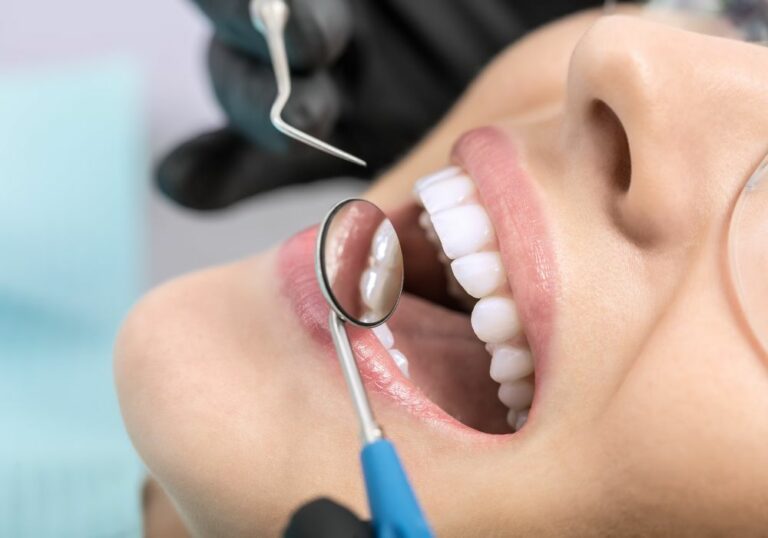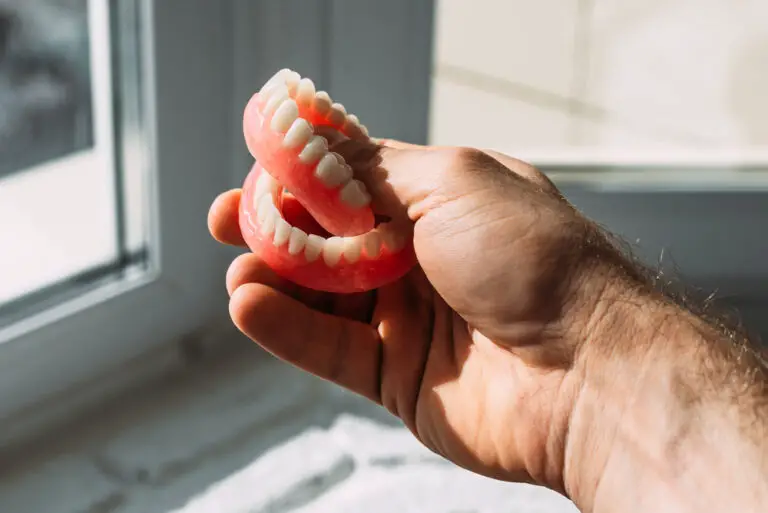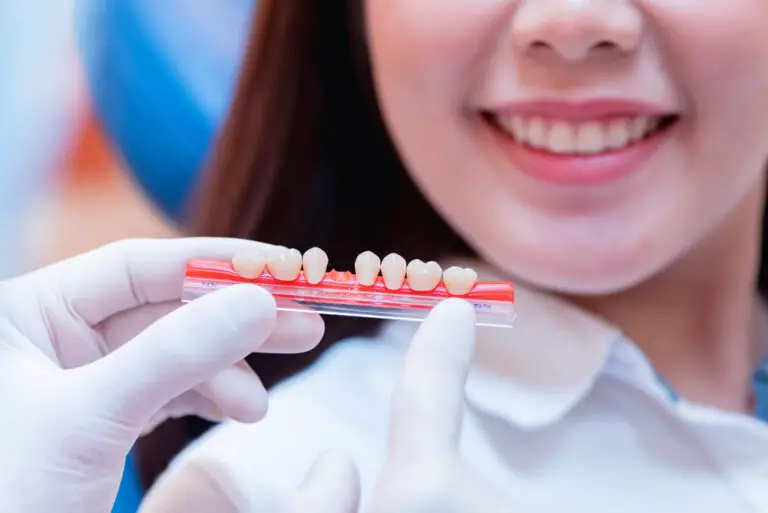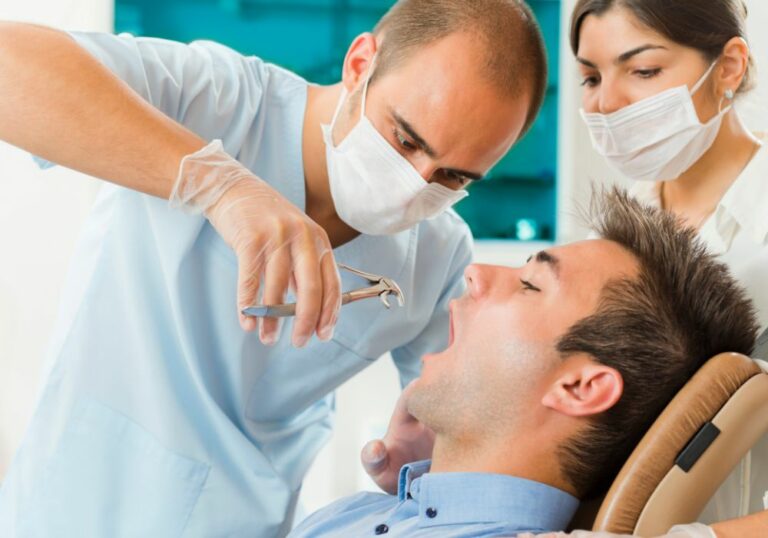What can you do for emergency wisdom teeth? Wisdom teeth, also known as third molars, are the last teeth to erupt in the back of your mouth. They typically emerge between the ages of 17 and 25. For some people, wisdom teeth can emerge normally and cause no problems. But many others experience issues like pain, infection, damage to nearby teeth and bones, cysts, tooth decay, and gum disease. If you’re experiencing serious problems with your emerging wisdom teeth, it may require emergency extraction. Here’s what you need to know about emergency wisdom teeth and how to get relief as soon as possible.
Recognizing when wisdom teeth require emergency extraction
Wisdom teeth often don’t have enough room to properly emerge in the mouth. This can lead to a variety of problems:
- Impaction – When a wisdom tooth becomes lodged in the jawbone or nearby tissue and fails to fully emerge. Impaction is very common. On x-rays, the wisdom tooth may appear tilted sideways, angled forward or backward, or unable to break through the gums. Impaction can be partial (some of the tooth emerges) or total (the tooth remains unseen under the gums). Mesioangular impaction (the tooth tilted towards the front of the mouth) is most common.
- Pericoronitis – Infection of the gum tissue surrounding the crown of a partially erupted wisdom tooth. Bacteria and food debris can easily become trapped under the flap of tissue over an emerging wisdom tooth, leading to swelling, pain, redness, and bleeding around the tooth. Pericoronitis has a rapid onset.
- Abscess – A collection of pus that forms due to bacterial infection of the pulp within an impacted or partially emerged wisdom tooth. Abscesses are extremely painful. The pus builds up in the tissues around the tooth, creating a swelling filled with dead cells and bacteria. Fever and fatigue may occur as the infection spreads.
- Cysts – Fluid-filled sacs that develop around impacted wisdom teeth. Cysts occur when the tooth follicle (tissue surrounding the crown) swells due to fluid buildup. Cysts can compress nerves, leading to damage and numbness. Dentigerous cysts are attached to the crown of the wisdom tooth itself.
- Tooth decay – Partially emerged wisdom teeth are hard to clean and prone to plaque buildup and cavities. The decay can also spread to nearby teeth. Unextracted wisdom teeth decay at a rate of 2.3% per year.
- Gum disease – Difficulty cleaning around wisdom teeth allows bacteria to infect the gums, causing gingivitis (gum inflammation) and advanced periodontal disease. This leads to receding gums, erosion of the jawbone, loose teeth, and bad breath.
- Damage to nearby teeth/bones – Crowding or abnormal eruption angles can exert pressure on or cause resorption of the roots of adjacent teeth. Wisdom teeth may also fracture the jawbone or thinner ramus bone when emerging.
Many problems with wisdom teeth come on slowly. But certain circumstances require urgent action:
- Sudden, severe pain that disrupts sleep
- Pus discharge from around the tooth
- Difficulty opening mouth due to swelling
- Fever, chills, fatigue
- Numbness/tingling in lips, tongue, or cheek
- Severe headache or jaw stiffness
- Bad taste or odor coming from back of mouth
If you experience any of these emergency symptoms, wisdom tooth extraction may be necessary right away to prevent potentially serious complications like spreading infections to vital structures surrounding the tooth roots. Don’t delay in seeking help.
Getting emergency treatment
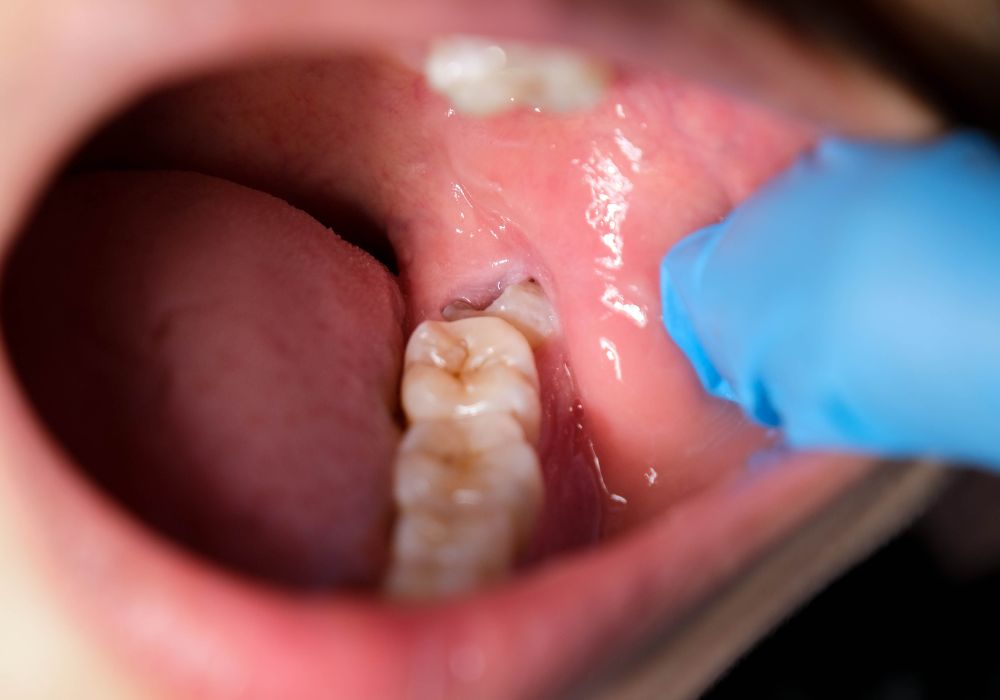
Here are some steps to take if your wisdom teeth start causing severe problems:
See your dentist immediately
- Explain your symptoms in detail and request an emergency exam. Your dentist will check for dental abscesses, signs of infection, and whether extraction is needed urgently. If you have a primary care doctor, they may also be able to provide antibiotics and preliminarily assess if emergency dental treatment is advised based on your symptoms.
Visit an emergency dentist
- If your regular dentist can’t offer a same-day emergency appointment, search for an emergency dental clinic in your area. Many have late hours in the evenings and weekends to treat urgent dental issues. You can also visit an urgent care clinic that has a dentist on staff.
Go to the emergency room
- For extreme, unrelenting pain, pronounced swelling, difficulty breathing or swallowing, or other concerning symptoms, go directly to the nearest hospital emergency room. They can provide IV antibiotics, pain medication, and arrange a consultation with the on-call oral surgeon for emergency extraction or other dental surgery that’s required.
Take over-the-counter pain relievers
- Ibuprofen, acetaminophen, or naproxen sodium can temporarily help relieve throbbing pain and reduce inflammation as you seek professional treatment. Use as directed.
Use warm saltwater rinses
- Gently rinsing with warm salt water 2-3 times a day may help soothe pain and draw out some infection from around the tooth until you’re able to have it removed. Mix 1 tsp salt in 8 oz warm water.
Apply cold compresses
- Using an ice pack or cold compress against your cheek can reduce severe swelling and inflammation around a problematic wisdom tooth. Apply for 10-20 minutes at a time.
Don’t try to endure an emergency wisdom tooth problem for too long before seeking help. Serious infections that spread to vital structures like the jaws, throat, sinuses, or even the brain can become life-threatening if not treated promptly. It’s important to get emergency extraction if recommended.
What to expect with emergency wisdom tooth extraction?
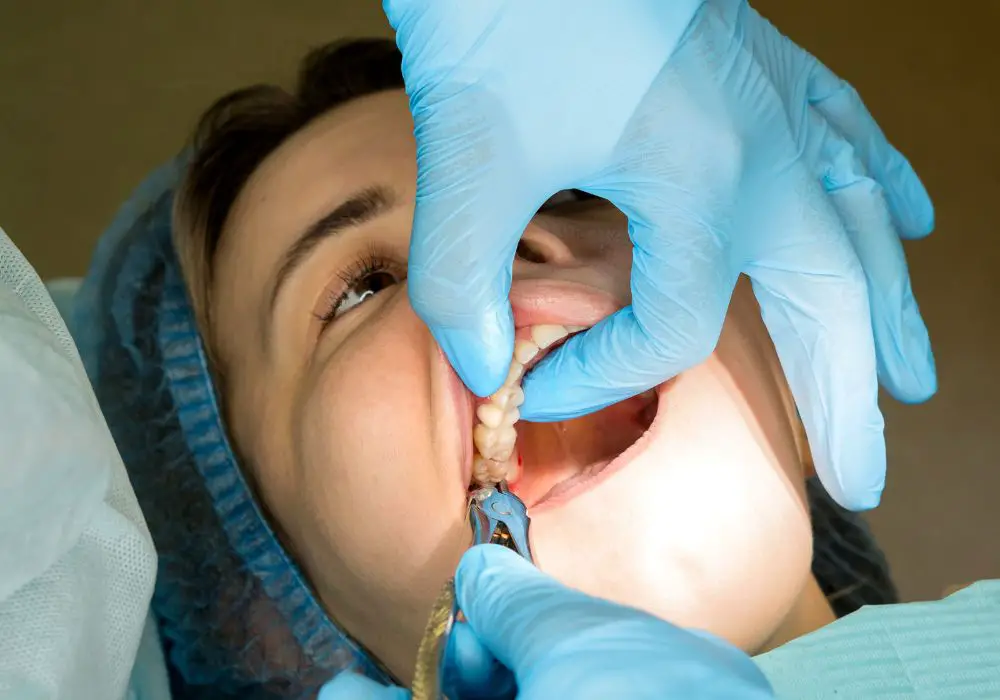
Emergency wisdom tooth extraction is often performed by an oral surgeon rather than a general dentist, since impacted or infected wisdom teeth can be more complex to remove. Here’s how the process normally goes:
- Medical history review – The oral surgeon will ask about your symptoms, health conditions, medications, and any prior reaction to anesthesia or dental work. Let them know about any allergies or risk factors.
- Clinical examination – The surgeon will examine your mouth, feel for areas of swelling or tenderness, check your lymph nodes, and assess the problematic wisdom teeth. Vital signs like heart rate and blood pressure will also be checked.
- Imaging – The surgeon will take panoramic x-rays, CT scans, or possibly other images to visualize the anatomy of your wisdom teeth, their position, any impaction or infection, and proximity to nerves, sinuses, and other structures.
- Anesthesia options – Emergency extraction can be performed under local anesthetic, intravenous (IV) sedation, or general anesthesia. This will be determined based on factors like your anxiety level, pain tolerance, number of teeth removed, and risk factors. Local numbness alone or with IV anti-anxiety medication are often used.
- Tooth removal – After administering anesthesia, your surgeon will make incisions in the gum tissue and remove any bone obstructing the impacted teeth using tools like drills and picks. The teeth will then be carefully extracted in one piece if possible using forceps and elevators.
- Clean and irrigate – The surgeon will thoroughly clean the extraction site by flushing warm saline solution through it to remove bacteria and debris. Stitches may be placed.
- Recovery – After surgery you’ll be monitored in a recovery area until the anesthesia wears off. Your dentist will provide post-op instructions. Initial recovery typically takes 1-2 hours.
- Follow-up – You may need to return to the oral surgeon after several days to check healing and remove any stitches or packing material if necessary. Call your surgeon with any concerns.
Though the surgery may be urgent, your dentist will take steps to minimize trauma and allow smooth, rapid healing. Follow all post-op guidelines closely.
What to do after emergency wisdom tooth extraction
Following emergency wisdom tooth removal, adhere to these post-op care guidelines recommended by dentists:
Take Prescribed Medications
- Finish any antibiotics or other medications properly to prevent painful infections. Take pain relievers as needed per dosing instructions. Don’t drink alcohol while taking medication.
Use Ice Packs
- Apply ice packs or cold compresses to your cheek for 10-15 minutes at a time during the first 24-48 hours to reduce facial swelling. Don’t apply ice directly as it could damage skin.
Rinse Gently
- After 24 hours, rinse mouth gently with warm salt water after meals and before bedtime. Mix 1/2 tsp salt with 8 oz warm water. This keeps wounds clean. Avoid forceful swishing.
Eat Soft Foods
- Stick to a liquid diet for the first 24 hours, then gradually add in soft foods like yogurt, applesauce, scrambled eggs, soup, mashed potatoes, etc. Avoid spicy, crunchy, or acidic foods that could irritate wounds.
Don’t Smoke
- Absolutely avoid smoking or using tobacco for at least 5-7 days after surgery, as it impedes healing. Don’t use smoking cessation products that increase risk of dry socket like nicotine gum.
Rest
- Reduce strenuous activity for 2-3 days after surgery. Get lots of sleep and give your body plenty of time to heal before resuming normal activity levels. Use extra pillows to prop your head up while resting.
Monitor for Problems
- Watch for severe, worsening pain, heavy bleeding, bad breath/taste, high fever, nausea, and swelling that persists after a few days. Report these immediately, as you may need antibiotics or emergency care.
Keep Up Oral Hygiene
- Brush teeth gently around surgical sites after 24 hours. Rinse mouth with antiseptic rinse if prescribed. Proper oral hygiene minimizes infection risk.
Follow post-op instructions closely to reduce chances of complications and heal quickly after emergency wisdom tooth extraction. Report any concerns promptly.
Wisdom tooth extraction complications
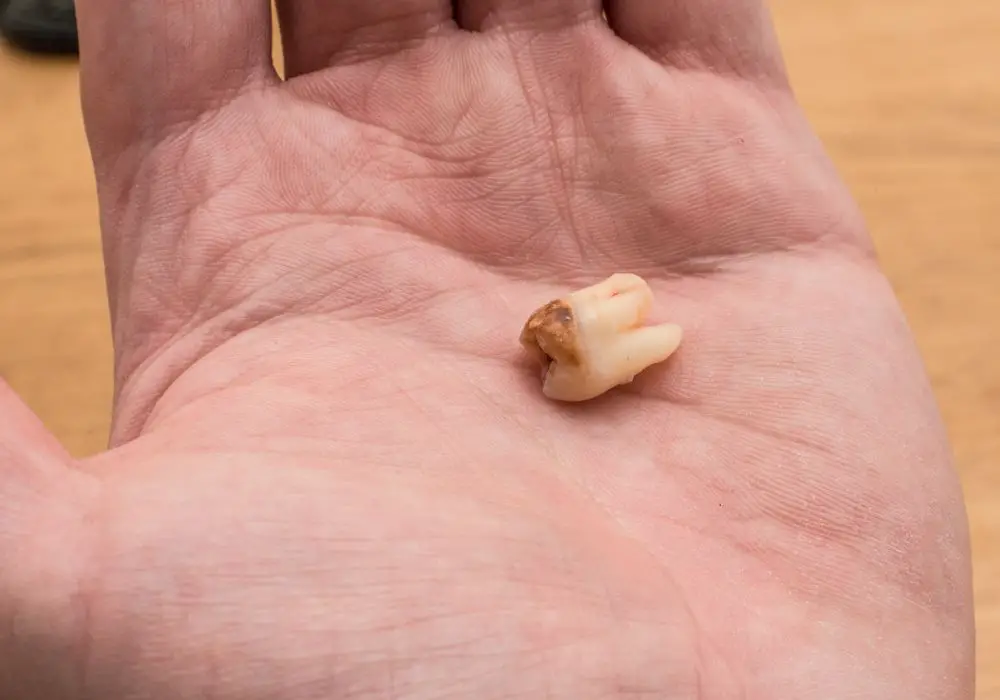
Though rare with proper aftercare, emergency wisdom tooth extractions may lead to certain complications:
- Dry socket – When a blood clot fails to form in the surgery site or gets prematurely dislodged. The exposed bone is extremely painful and at high risk of infection. Dry socket is treated by irrigating the socket, then packing it with medicated gauze to protect the bone until it can form granulation tissue.
- Alveolar osteitis – Delayed healing of the socket due to premature loss of the blood clot. Associated with throbbing pain that peaks at 3-5 days after extraction. Treatment involves debridement and placing new medicated dressing.
- Infection – Bacteria can lead to a postoperative infection of the gums, cheeks, or jaw after extraction. Signs include fever, swelling, foul odor/taste, and pus discharge. Your dentist will prescribe antibiotics to clear an infection.
- Abscess – A pocket of pus caused by bacterial infection around the extraction site or within the bone. Associated with throbbing pain, swelling, fever, and tenderness. An abscess requires drainage and antibiotics.
- Nerve injury – Wisdom teeth embedded near nerves can sometimes cause nerve damage during removal, resulting in pain, numbness or tingling that radiates to the tongue, chin, or lower lip. Usually temporary, but may persist.
- Sinus issues – Roots of upper wisdom teeth extending into the maxillary sinuses can lead to a sinus infection or hole between mouth and sinus after extraction. Symptoms are sinus pressure and nasal discharge.
- Bleeding – Some minor oozing is normal after extraction but heavy or excessive bleeding may require prompt attention to deter severe blood loss. Applying pressure and using hemostatic aids can help stop bleeding.
- Bone fragments – Occasionally small fractured bone pieces get left behind after surgical extraction and later work their way out through the gums. Unless infected, these bone spicules often don’t require removal.
See your dentist right away if you experience any concerning symptoms after emergency wisdom tooth removal so proper treatment can be administered promptly. Serious problems are uncommon with attentive aftercare.
Frequently asked questions about emergency wisdom teeth
Here are answers to some common questions about emergency wisdom tooth extraction and related issues:
What are the most common reasons dentists recommend emergency extraction of wisdom teeth?
The most frequent reasons for emergency removal include severe impaction, infection manifesting as an abscess or pericoronitis, cysts damaging nearby structures, uncontrolled decay, and trauma or damage to adjacent teeth and bones due to eruption problems.
How long does recovery after wisdom tooth extraction usually take?
Typical recovery takes around 1-2 weeks. Swelling and discomfort generally peak at days 2-3 then improve. Initial healing takes 5-7 days but wisdom tooth sockets take 2-3 months to completely fill in with bone. Healing time increases with more traumatic extractions.
When is it safe to resume normal activities after wisdom tooth removal?
Most people need 2-4 days off work or school for rest after wisdom tooth extraction. Strenuous exercise should be avoided for at least 1 week post-op to prevent bleeding complications. Normal diet can usually be resumed after 5-7 days. Talk to your oral surgeon about when it’s advisable to resume your normal activity levels.
What helps best with pain and swelling after wisdom tooth extraction?
Using ice packs regularly during the first 24-48 hours helps reduce facial swelling. Over-the-counter pain relievers like ibuprofen or acetaminophen combined with rest are effective for managing postoperative pain per dosage instructions. Prescription medications may be given for more severe impactions.
How expensive is emergency wisdom tooth extraction without insurance?
Costs vary based on location and specific case complexity, but average around $200-$600 per tooth without insurance. Some or all costs may be covered by dental insurance plans. Procedures done in a hospital ER setting tend to be more expensive. Ask your dentist for an estimate beforehand.
When is an emergency room visit warranted for wisdom teeth issues?
Go to the ER immediately if you have difficulty breathing or swallowing, signs of spreading infection like high fever or stiff neck, uncontrolled bleeding from the mouth, or facial swelling that closes your airway. These can indicate a serious complication requiring emergency hospital care.
Getting quick relief for problematic wisdom teeth is important to avoid complications and serious infections. Understand the signs that indicate emergency extraction is needed and follow your dentist’s instructions closely before and after surgery for optimal recovery.

